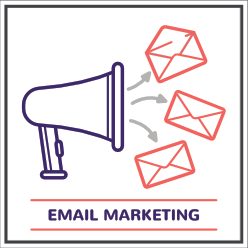Text to Image ratios in email
One of the questions I get from folks about delivery is what the optimal text to image ratio there should be in an email. I’ll be honest, I hate this question. Why? Because the question is actually irrelevant. I’ve seen companies with a single image and no text get to the inbox. I’ve seen companies with no images get to the inbox. The text to image ratio is not going to make or break delivery.
Sending mail that the user expects and wants is the crucial part of delivery. If the user wants a single image? That’s the right ratio. If the user wants a readable message with images turned off? That’s the right ratio. Fretting about 20/80 or 18.5/81.5 or 43.256666/56.743334 is getting buried in details and missing the bigger picture.
Emails should be readable. These days, being readable on mobile is critical. This is the single best argument I can think of against one-image emails. And there are still folks who read email with images off by default. Being one of them, I think it gives me insight other delivery folks lack. If I am engaged with a brand, how do I show it outside of loading images? What kinds of things let the brand know I’m still a happy recipient?
If anyone tells you that your delivery problems are the result of a bad text to image ratio, run away. There is zero chance that’s actually true. Filters aren’t going to just look at the ratio and block ratios that fall into a certain range.
What filters are going to do is take the text to image ratio as part of the fingerprint of an email stream. They’re going to recognize certain factors about emails that users like, and factors about emails that users don’t like. Some of these factors will be things like the text to image ratio. But the “wrong” ratio isn’t why mail is being filtered. Mail is being filtered because the recipients aren’t interacting with it enough and the ratio is just one part of the way the ISP identifies it.
Stop fretting over your exact text to image ratios. The right, or wrong, ratio isn’t a true factor in delivery. Instead, focus on creating an email stream that users want, expect, and engage with. This starts with address collection, but collecting accurate addresses isn’t enough. You also need to provide value to them.
Sending mail users want is the key to reach the inbox. Doing that takes time and investment by the sender.